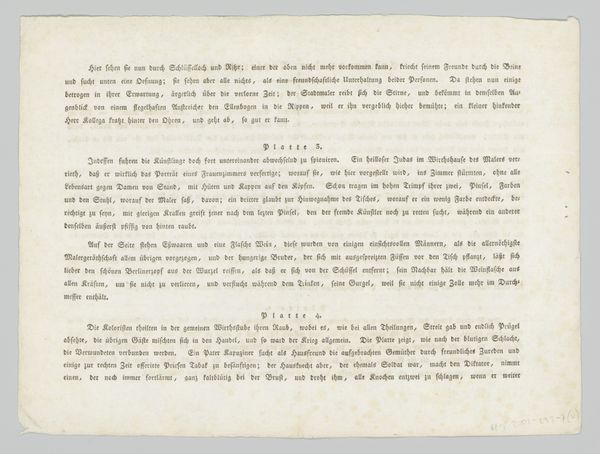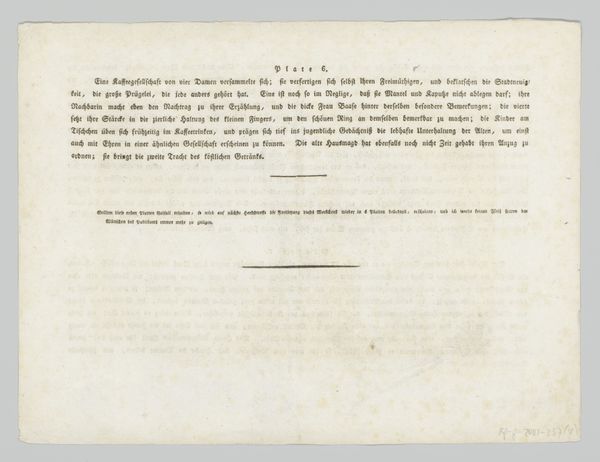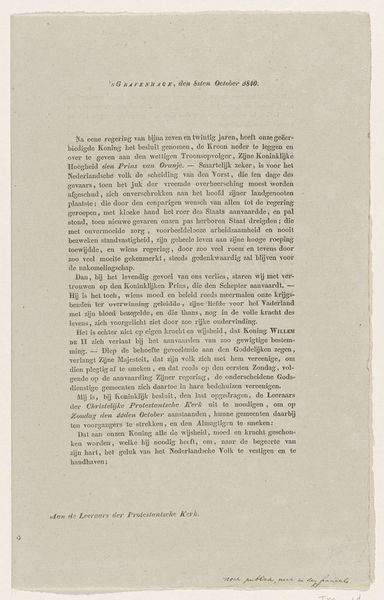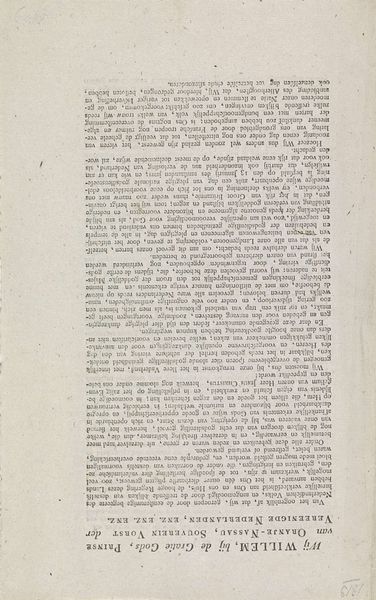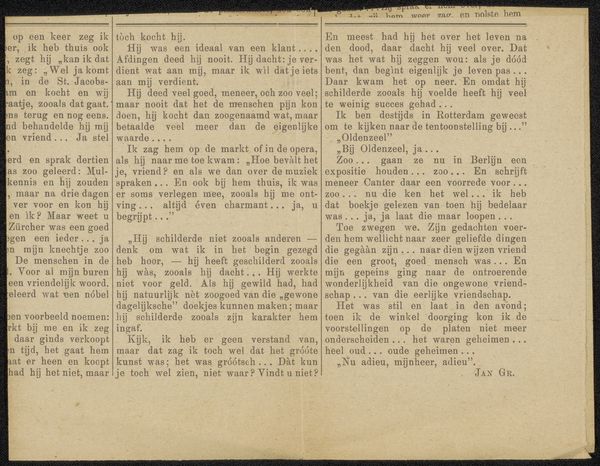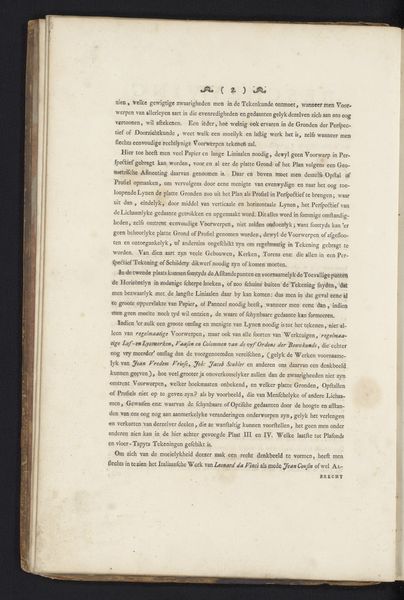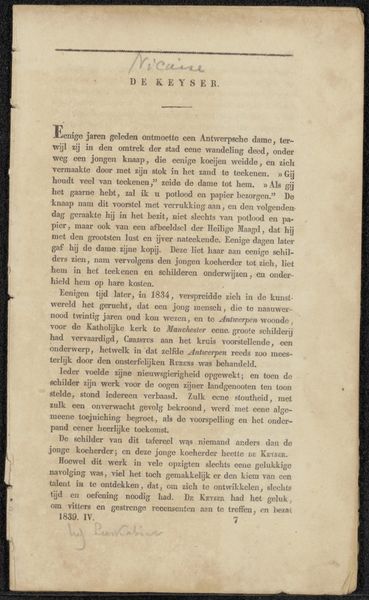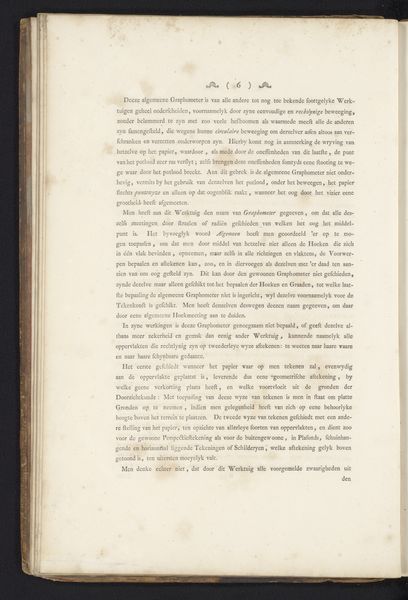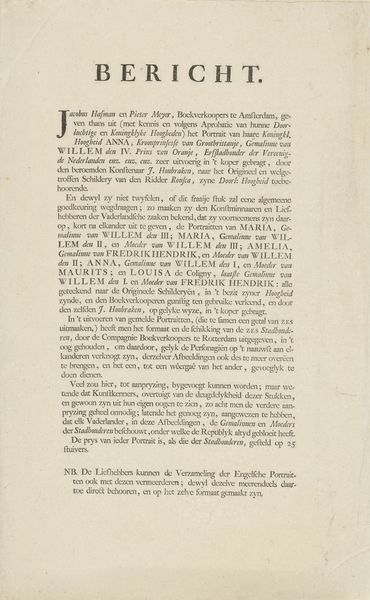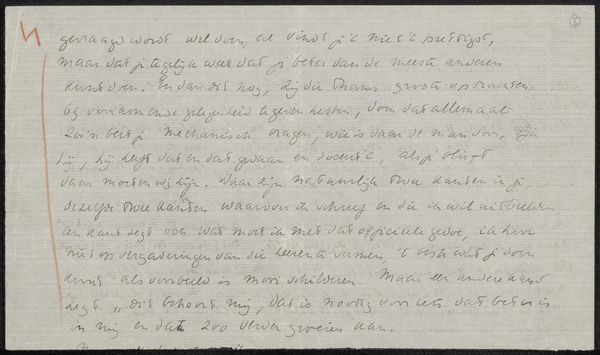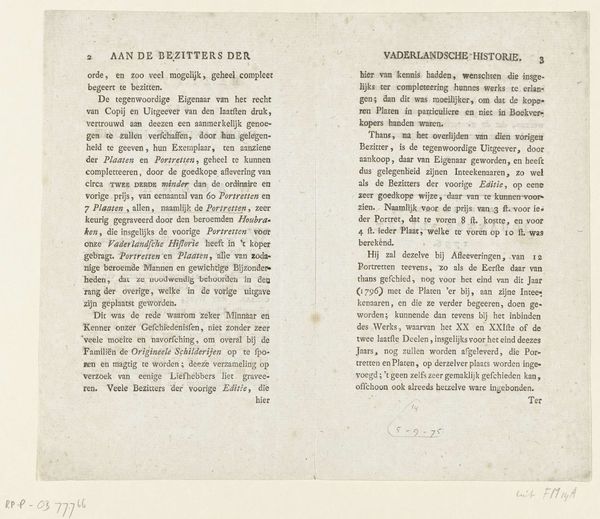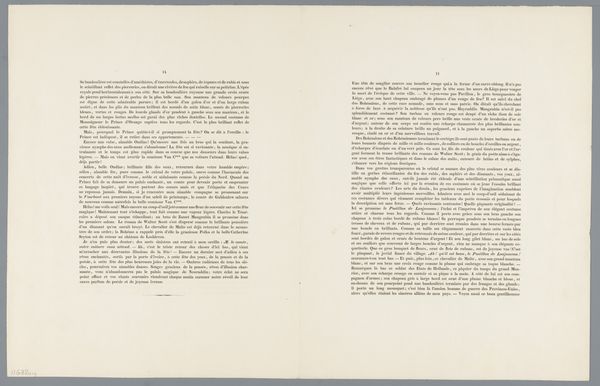
graphic-art, print, paper
#
graphic-art
# print
#
paper
#
text
Dimensions: height 230 mm, width 306 mm
Copyright: Rijks Museum: Open Domain
Curator: So, "Explanation for Print 5," dating from 1788 to 1806 by Friedrich Rottmann, a print on paper. It’s certainly a dense image, all that text surrounding the illustration... I'm struck by how performative the legal scene seems, like a stage play for the wealthy. What leaps out at you, looking at the entire artifact? Editor: I suppose I'm interested in this combination of text and image, the ways that they may interact with each other. I suppose that it reminds me that, for people from this period, texts like this were one of the only means of reproducing visual images. As a materialist, how do you make sense of this image? Curator: Well, consider the printmaking process. The labor involved in etching, the specific type of paper used, the ink... these choices weren’t arbitrary. They reflect economic realities and available technologies. This wasn't mass produced as we would know it, each impression represents labour time. Look at the detail, it's amazing what has been done by hand! Editor: So, you're saying that the value isn't just in the image itself, but in the context of its production and consumption? Curator: Precisely. It questions the very idea of art as existing separate from these material conditions. The information the text is imparting had labour and value, same as the labour creating the printing plate for the image did. The labour creating paper, the labour marketing the final artifact, each job has labour and value. Editor: I hadn't considered the act of simply producing this print as a commentary on labor, it almost renders invisible the role the labour had within society and shifts my focus on merely the art, I will have to remember that. Thank you. Curator: Absolutely. Seeing the work as the endpoint is something we have to unlearn.
Comments
No comments
Be the first to comment and join the conversation on the ultimate creative platform.
